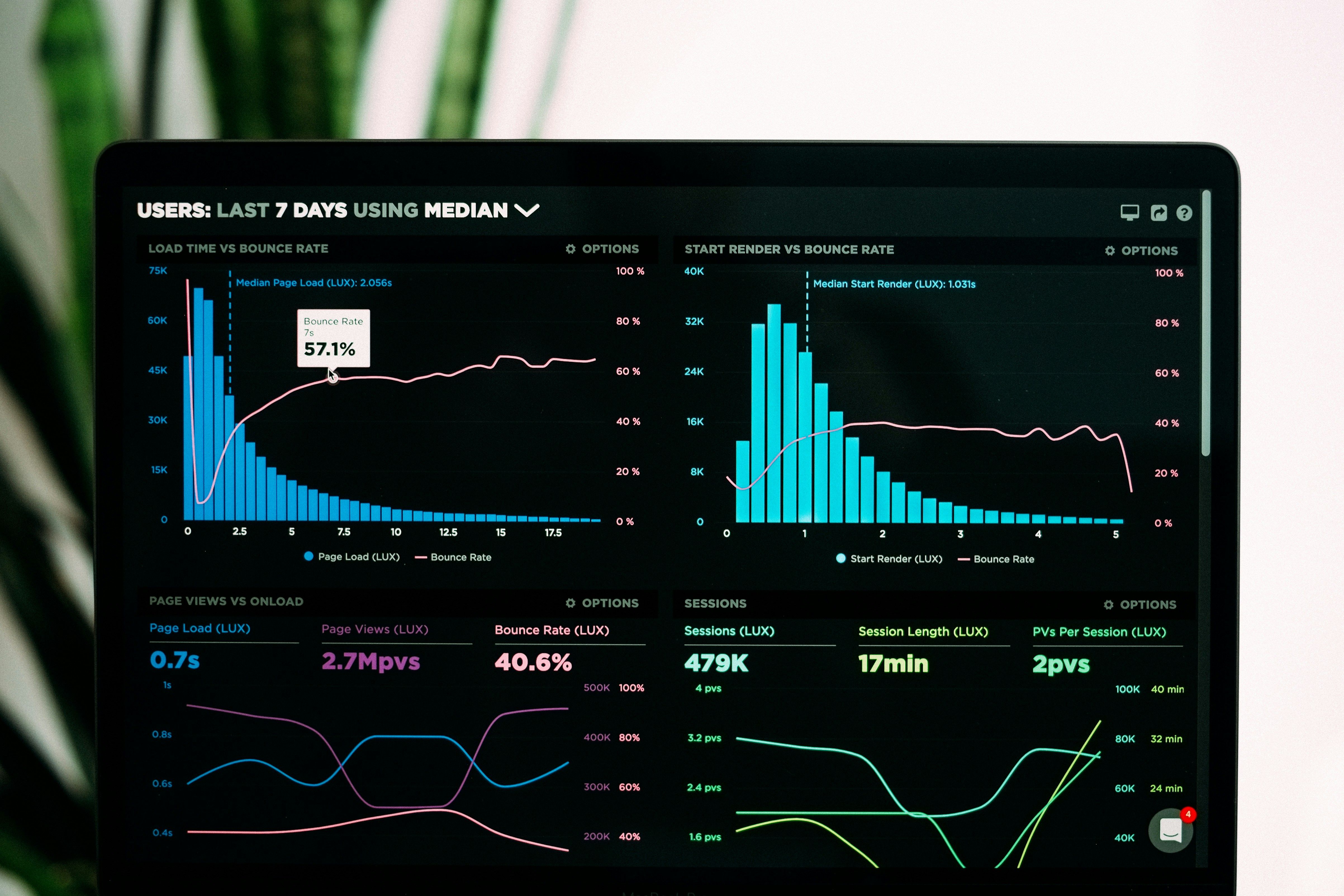There is no time for an intro - only for grinding. Let's get right into it:
Define your campaign objectives and target audience
Set specific, measurable, achievable, relevant, and time-bound (SMART) Goals
Setting clear goals is crucial before establishing a successful influencer marketing campaign. Your goals will be clear and attainable if you use the SMART goal-setting approach.
- Specific: Clearly define your campaign objectives. Instead of a vague goal like "increase brand awareness," aim for something more specific, such as "increase Instagram followers by 20%."
- Measurable: Quantify your objectives so that you can track progress and measure success. For example, instead of stating "improve sales," set a measurable goal like "increase sales by 15%."
- Achievable: Ensure your goals are realistic and attainable within the resources and timeframe available. Overly ambitious goals may result in disappointment and wasted resources.
- Relevant: Align your campaign objectives with your overall business and marketing strategies. For example, if your goal is to increase engagement, ensure that the campaign is designed to encourage interaction and participation from your target audience.
- Time-bound: Set a deadline for achieving your campaign objectives. This helps to create a sense of urgency and keeps the campaign on track. For example, "increase website traffic by 25% within three months."
Identify your target audience and their demographics, interests, and behaviors
Understanding your target audience is crucial to the success of your influencer marketing campaign. Consider the following factors when identifying your target audience:
- Demographics: Analyze the age, gender, location, income, and education level of your ideal customer. This information helps in selecting influencers who have a similar audience profile.
- Interests: Determine the hobbies, preferences, and passions of your target audience. This helps to create content that resonates with them and engages them more effectively.
- Behaviors: Examine the online habits, purchasing patterns, and social media usage of your target audience. This information can help you choose the right platforms and formats for your campaign, as well as the ideal time to post content.
- Pain Points: Identify the problems and challenges faced by your target audience. This helps to create content that addresses their needs, thus making your campaign more appealing and valuable.
- Influencer Preferences: Research the types of influencers your target audience follows and engages with. This will help you to choose influencers who have a strong connection with your target market.
Choose the right influencers for your campaign
Choosing the correct influencers to work with is essential for a successful influencer marketing strategy. While choosing influencers, keep the following in mind to create a successful partnership:
Research potential influencers based on niche, audience size, and engagement
- Niche: Identify influencers who specialize in your industry or a related field. These individuals will have a more engaged and relevant audience, leading to higher chances of campaign success.
- Audience Size: Determine the ideal audience size for your campaign. While macro-influencers have a larger reach, micro and nano-influencers often boast higher engagement rates and can drive more targeted results.
- Engagement: Evaluate the influencer's engagement metrics, such as likes, comments, shares, and click-through rates. Higher engagement indicates a stronger connection with their audience and a greater likelihood of driving meaningful results for your campaign.
Explore influencer marketing with Social Cat's free trial or schedule a demo to learn how partnering with micro-influencers can elevate your brand's presence.
Evaluate the influencer's credibility, authenticity, and content quality
- Credibility: Assess the influencer's reputation and expertise in their niche. A credible influencer will have a positive track record, demonstrate knowledge in their field, and be respected by their audience and peers.
- Authenticity: Analyze the influencer's content and communication style to ensure they are genuine and relatable. Authentic influencers will have a more trusting and loyal audience, making them more effective at promoting your brand.
- Content Quality: Review the influencer's content, including visuals, captions, storytelling, and overall production value. High-quality content will better capture the attention of your target audience and reflect positively on your brand.
Develop a creative and engaging campaign strategy

Create a unique and interesting plan for your influencer marketing campaign to optimize its impact. To do this, think about taking the following actions:
Collaborate with Influencers to brainstorm unique and innovative content ideas
- Involve influencers in the ideation process, leveraging their creativity and understanding of their audience to generate compelling content concepts.
- Encourage open communication and brainstorming, allowing both parties to contribute ideas and share insights.
- Consider various content formats, such as blog posts, videos, images, podcasts, or live events, to create a diverse and engaging campaign.
Align the content with your brand's values and messaging

- Ensure the campaign's content stays true to your brand's identity and core values, maintaining consistency and authenticity.
- Collaborate with influencers to weave your brand's messaging into the content naturally, avoiding overly promotional or forced placements that could alienate the audience.
- Encourage influencers to share their genuine opinions and experiences with your product or service, fostering trust and credibility among their followers.
Determine the optimal platforms and formats for your campaign
- Identify the most relevant social media platforms for your target audience, focusing on those where they are most active and engaged.
- Consider the unique features and user behaviors of each platform, tailoring your content and strategy accordingly. For example, Instagram is ideal for visually appealing content, while Twitter is better suited for concise, text-based updates.
- Experiment with different content formats, such as images, videos, stories, polls, or live streams, to keep your campaign fresh and engaging. Utilize each platform's native tools and features to enhance the user experience and increase engagement.
Establish a clear communication and collaboration plan
Any influencer marketing campaign must have effective communication and teamwork to be successful. Take into account the following actions to establish a successful and fruitful partnership:
Set expectations for content creation, timelines, and deliverables
- Clearly outline your expectations for the campaign, including content format, style, frequency, and any specific messaging or product placement requirements.
- Establish a timeline for the campaign, including deadlines for content creation, approvals, and publishing. Ensure that both parties agree on these dates and are committed to meeting them.
- Define the deliverables for the campaign, such as the number of posts, stories, or other content types that the influencer is expected to produce. Make sure these expectations are realistic and achievable.
Maintain open lines of communication throughout the campaign
- Keep in touch with your influencers regularly, providing updates, feedback, and support as needed. This helps to address any issues or concerns promptly and keeps the campaign on track.
- Encourage influencers to share their thoughts, ideas, and progress throughout the campaign. This fosters a sense of collaboration and allows for adjustments and improvements as needed.
- Utilize communication tools, such as email, messaging apps, or project management platforms, to facilitate efficient and organized communication between both parties.
Foster a strong working relationship with your influencers
- Treat influencers as valued partners and show appreciation for their contributions to the campaign. This helps to build trust, loyalty, and a positive working relationship.
- Be open to feedback and suggestions from your influencers, as they often have valuable insights into their audience and the effectiveness of your campaign.
- Maintain a professional and respectful relationship, addressing any issues or concerns promptly and fairly.
Determine your budget and compensation structure

A clearly defined budget and pay structure are essential components of an influencer marketing plan. To determine how much to compensate your influencers, follow these steps:
Consider various compensation models
- Flat fees: Pay influencers a fixed amount for their participation in the campaign. This model offers simplicity and clarity for both parties but may not always reflect the true value or impact of the influencer's work.
- Commission-based: Compensate influencers based on the performance of their content, such as a percentage of sales or leads generated. This model can incentivize influencers to create more effective content but may also lead to unpredictable earnings.
- Product/service exchange: Provide influencers with free products or services in exchange for their promotion. This model can be cost-effective for the brand, but it may not always be attractive or sufficient for the influencer, especially if they have a large following and high demand.
Assess the Influencer's Value and Impact
- Evaluate the influencer's reach, engagement, and relevance to your target audience. Higher-value influencers may command higher compensation rates.
- Consider the effort and resources required for content creation, such as time, equipment, and production costs. Influencers who invest more in their content may expect higher compensation.
- Assess the potential return on investment (ROI) of the campaign, including factors such as increased brand awareness, engagement, and sales. This can help guide your budget allocation and compensation decisions.
Explore influencer marketing with Social Cat's free trial or schedule a demo to learn how partnering with micro-influencers can elevate your brand's presence.
Negotiate mutually beneficial terms for both parties
- Engage in open and transparent discussions with influencers about their compensation expectations and your budget constraints. Aim to reach an agreement that both parties feel is fair and reasonable.
- Be flexible and willing to compromise, as it's essential to strike a balance between securing the influencer's commitment and staying within your budget.
- Document the agreed-upon compensation terms in a written contract to ensure clarity and accountability for both parties.
Track and measure the success of your campaign
The performance of your influencer marketing program must be evaluated in order to make data-driven modifications. The following procedures will assist you in monitoring and evaluating the success of your campaign:
Establish key performance indicators (KPIs) to monitor during and after the campaign
- Determine the metrics that are most relevant to your campaign objectives, such as engagement rate, reach, impressions, click-through rate, conversions, or return on investment (ROI).
- Set specific targets for each KPI to help you evaluate the success of your campaign and compare its performance against your goals.
- Monitor your KPIs throughout the campaign, as well as after its completion, to gain a comprehensive understanding of its performance over time.
Use analytics tools to collect data and measure the effectiveness of your campaign
a. Leverage platform-specific analytics tools, such as Instagram Insights, Facebook Analytics, or YouTube Analytics, to track the performance of your campaign on each platform.
b. Utilize third-party analytics tools, such as Google Analytics, Hootsuite, or Sprout Social, to gather additional insights and consolidate your data across platforms.
c. Analyze the collected data to identify trends, patterns, and areas of success or improvement within your campaign.
Continuously optimize your campaign strategy based on the results
a. Regularly review your KPIs and analytics data to identify areas where your campaign is underperforming or exceeding expectations.
b. Adjust your campaign strategy as needed, making data-driven decisions to improve its performance. This may include changes to content, messaging, platforms, or influencer collaborations.
c. Communicate any adjustments or feedback to your influencers, working together to refine and optimize the campaign for maximum impact.
Evaluate and Learn from Your Campaign
Continuous improvement and long-term success depend on your ability to reflect on your influencer marketing campaign's performance and learn from it. To assess your campaign and learn from it, take the following actions:
Conduct a post-campaign analysis to determine what worked and what didn’t
Review the KPIs and analytics data from your campaign to identify areas of success, as well as those that underperformed or failed to meet expectations.
Consider factors such as influencer selection, content quality, audience engagement, messaging, platforms, and compensation structure when analyzing your campaign.
Gather feedback from your influencers, team members, and, if possible, your target audience to gain additional perspectives on the campaign's performance.
Use the insights gained to improve your future influencer collaborations
- Apply the lessons learned from your campaign analysis to inform and enhance your future influencer marketing efforts. This may involve refining your influencer selection criteria, improving your content strategy, or adjusting your campaign objectives and KPIs.
- Develop a plan for implementing these improvements and share it with your team and influencers, fostering a culture of continuous learning and growth.
- Regularly review and update your influencer marketing strategy to ensure it remains aligned with your brand's goals, audience preferences, and industry trends.
Maintain relationships with successful influencers for potential future campaigns
- Nurture ongoing relationships with influencers who have contributed to the success of your campaign by staying connected and expressing your appreciation for their work.
- Consider involving these influencers in future campaigns, leveraging the established rapport and proven results to drive continued success.
- Encourage open communication and collaboration with your trusted influencers, inviting their input and ideas for future campaigns and potential partnerships.
There you have it, then! Keep in mind that the secret to mastering influencer marketing is to continuously learn, develop, and modify your strategy. Never be hesitant to try new things and tinker with your plans as you go. You'll continue to advance and have even more success with your upcoming campaigns as long as you have flexibility and an open mind. Keep going, and you'll see your influencer partnerships skyrocket!
Table of content
- There is no time for an intro - only for grinding. Let's get right into it:
- Define your campaign objectives and target audience
- Choose the right influencers for your campaign
- Develop a creative and engaging campaign strategy
- Establish a clear communication and collaboration plan
- Determine your budget and compensation structure
- Track and measure the success of your campaign
- Evaluate and Learn from Your Campaign
Looking for influencers?
Table of content
- There is no time for an intro - only for grinding. Let's get right into it:
- Define your campaign objectives and target audience
- Choose the right influencers for your campaign
- Develop a creative and engaging campaign strategy
- Establish a clear communication and collaboration plan
- Determine your budget and compensation structure
- Track and measure the success of your campaign
- Evaluate and Learn from Your Campaign










